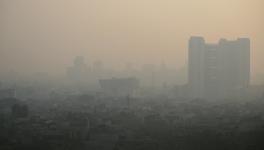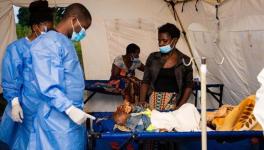Loneliness Triggers Same Area in Brain as Hunger, Researchers Find
While loneliness has been a matter of concern for psychiatrists and psychologists since time immemorial, social distancing, brought about by COVID-19, is emerging as an even greater threat, pushing a considerable section of people into isolation.
The adverse effects of loneliness are already known – memory loss, decline in cognitive ability and suicides, to name a few. Lately, neurological underpinnings of loneliness are also beginning to emerge, with two important studies exploring the phenomenon.
The first, published in the journal Nature Neuroscience on November 23, has some remarkable findings. It says that the same area in the human brain is activated when we feel lonely or hungry. Due to this, people crave for social interaction in the same way they crave food when hungry.
“People who are forced to be isolated crave social interactions similarly to the way a hungry person craves food. Our finding fits the intuitive idea that positive social interactions are a basic human need, and acute loneliness is an aversive state that motivates people to repair what is lacking, similar to hunger,” Prof Rebecca Saxe, John W. Jarve Professor of Brain and Cognitive Sciences at MIT and one of the authors of the study, was quoted saying.
The research data was collected during 2018 and 2019, long before the pandemic broke out. The researchers focussed on how the brain behaves in response to social stressors, and, with loneliness being a formidable stressor, the research team tried to create loneliness for their volunteers. For that, the volunteers, most of whom were healthy college students, were put in a windowless room at the MIT campus for ten hours. They were not given phones but a computer was made available so that they could contact the researchers when necessary.
After the long isolation period, each volunteer was subjected to fMRI (functional MRI) scanning. Each volunteer was to enter the fMRI machine by themselves, without the help of others, so that any social contact during the entire experiment could be avoided. The volunteers were trained for this prior to their isolation.
The participants also underwent a ten-hour fasting on a different day. Whether during fasting or in social isolation, the participants were shown images of food, people interacting and of neutral images like flowers. Their brains were then scanned by the fMRI machine. The researchers focused mainly on the substantia nigra, a tiny portion of the brain located in the mid-brain area. This particular brain structure was previously found to be associated with cravings for food or drugs. This brain area in human beings is also evolutionary related to another brain area in mice, known as the dorsal raphe nucleus, which has previously been shown to be activated during social isolation in mice.
The researchers started with the hypothesis that socially isolated people would crave company after seeing pictures of social interaction and activate the craving network in their brain. Similarly, a hungry person’s craving network would be activated seeing images containing food. The fMRI results proved their hypothesis to be true. Furthermore, the degree of craving, either for social interaction or food, was found to be subjective. The signal for craving, in both cases, was governed by the activation of the same brain area.
The importance of the findings is that social interaction is as basic for humans as food is. Like people can’t exist in prolonged hunger, they can’t sustain prolonged loneliness.
The other study was published in Nature Communication on December 15. It showed that a unique signature exists in the brains of people suffering from loneliness, which makes them fundamentally distinguishable from others.
This study incorporated MRI data along with genetics and psychological self-assessment of 40,000 middle-aged and adult volunteers. The team compared the MRI data of participants who themselves reported to feel loneliness often, to those who did not share the same feeling. The brain signature among lonely people was found in a brain network known as the default network, which is a set of brain regions involved in inner thoughts such as reminiscing, future planning, thinking about others and imagining.
The default network is found to be stronger in people who often feel lonely, aside from an increased volume of grey matter in the default network. The researchers also found a difference in the fornix of the lonely people. The fornix is a bundle of nerve fibres that transmits signal from the hippocampus (an area of the brain which plays a major role in learning and memory) to the default network. The fornix was found to be more formidable in lonely people.
“In the absence of desired social experiences, lonely individuals may be biased towards internally-directed thoughts such as reminiscing or imagining social experiences. We know these cognitive abilities are mediated by the default network brain regions. So this heightened focus on self-reflection, and possibly imagined social experiences, would naturally engage the memory-based functions of the default network,” said Nathan Spreng from The Neuro (Montreal Neurological Institute-Hospital) of McGill University, the lead author of the study.
Get the latest reports & analysis with people's perspective on Protests, movements & deep analytical videos, discussions of the current affairs in your Telegram app. Subscribe to NewsClick's Telegram channel & get Real-Time updates on stories, as they get published on our website.
























